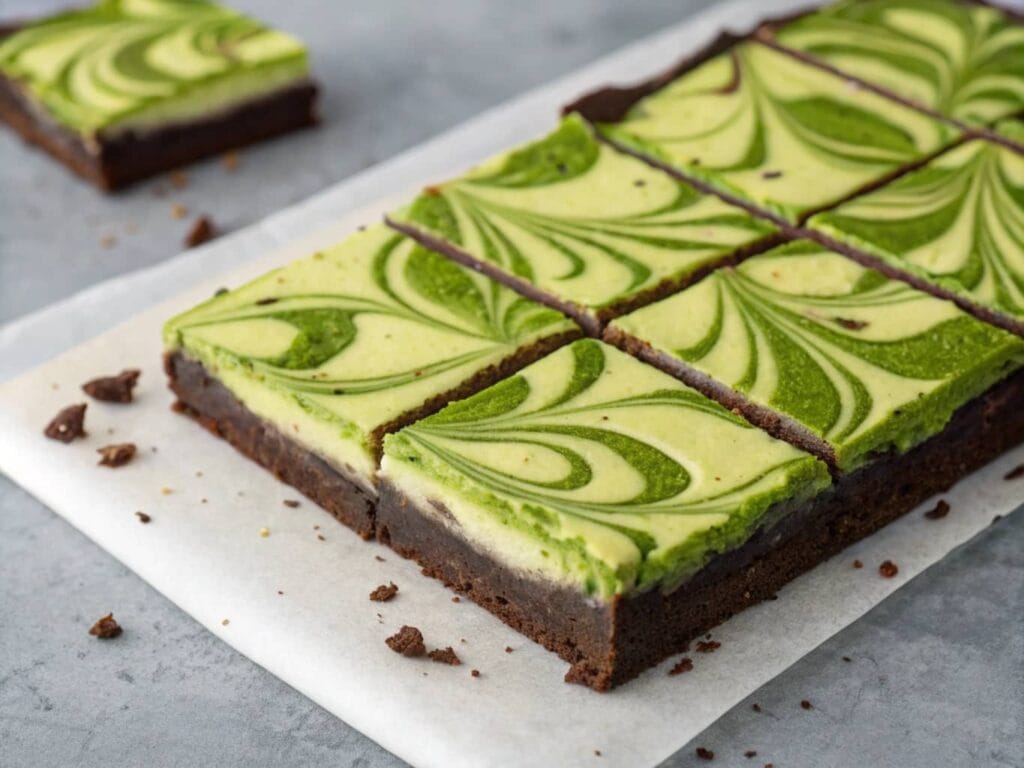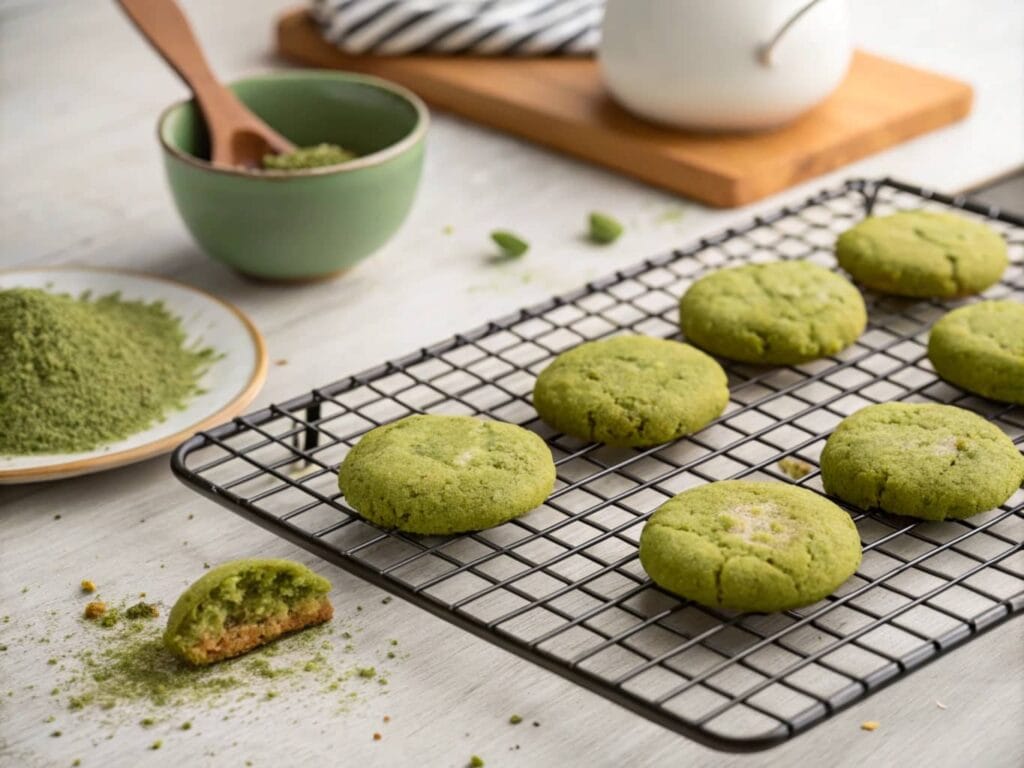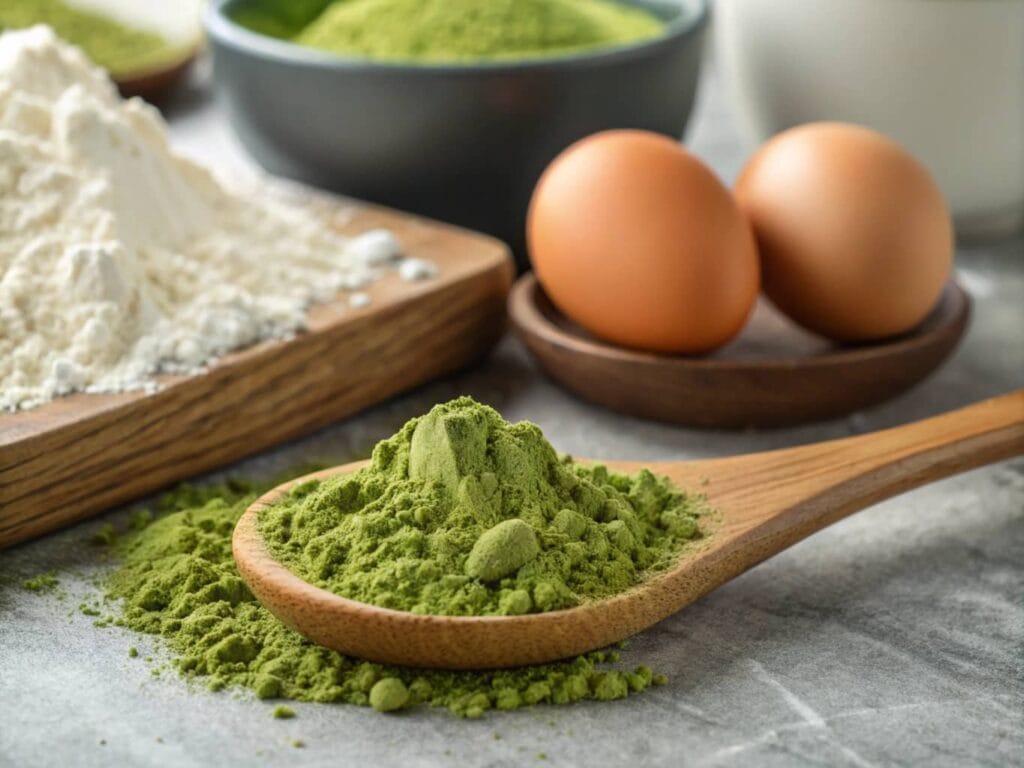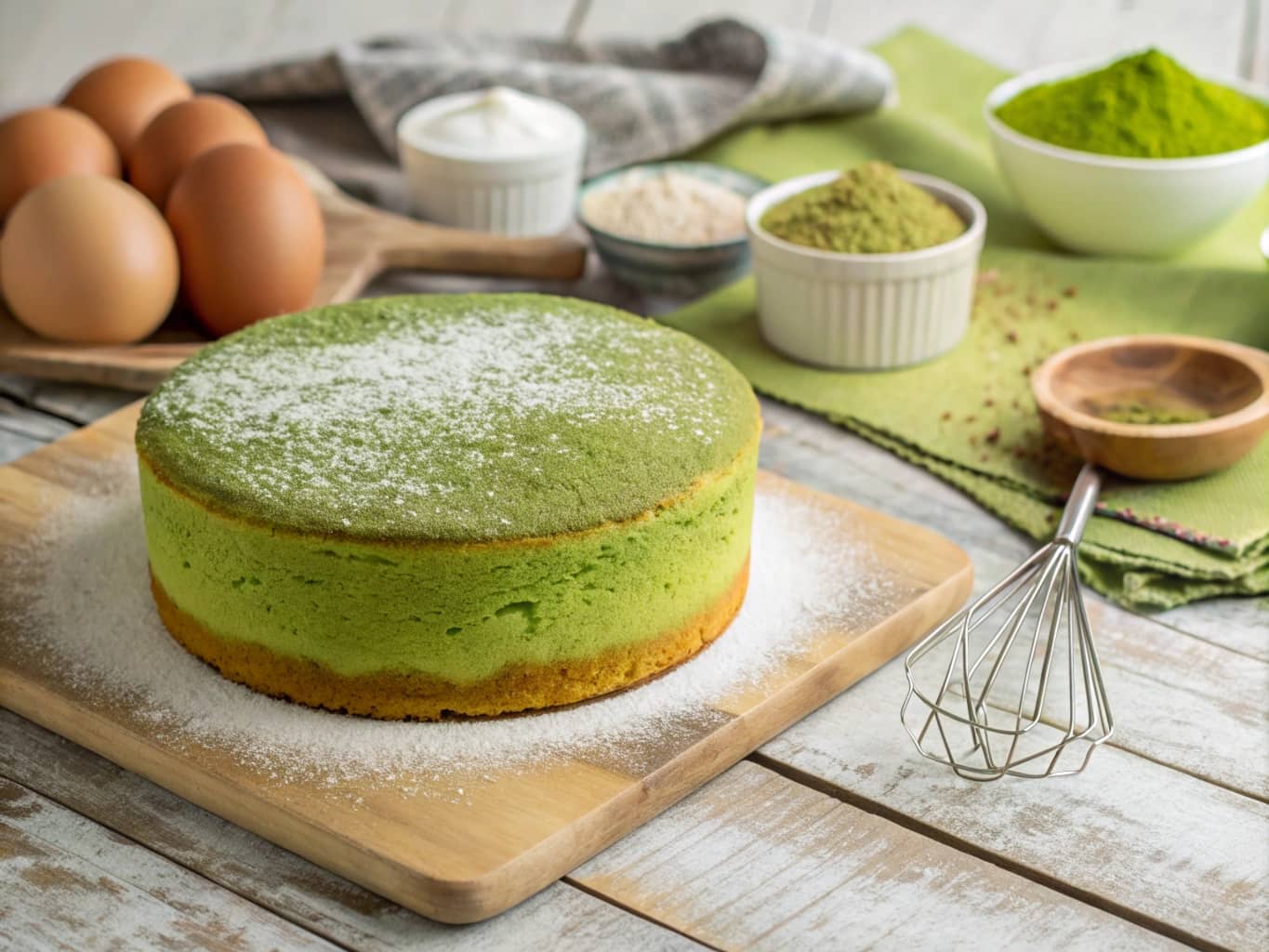Baking with matcha is like adding a dash of green magic to your desserts. It’s vibrant, it’s earthy, and it’s oh-so-trendy! But let’s face it: matcha can be a bit of a diva in the oven. Ever wondered why your once-lively green matcha cookies or cakes come out looking brown and unappealing? You’re not alone. This guide dives deep into this culinary mystery and offers you practical solutions to keep your baked goods looking as gorgeous as they taste.
Introduction to Baking with Matcha
What is Matcha?
Matcha is more than just a powdered form of green tea; it’s a way of life! Originating from Japan, this finely ground powder comes from specially grown tea leaves that are shaded before harvesting. The shading enhances chlorophyll levels, giving matcha its signature vibrant green color.
But matcha isn’t just about looks—it’s a powerhouse of antioxidants, offering health benefits like improved focus, metabolism-boosting, and stress reduction. No wonder it’s found its way into everything from lattes to cakes!
The Popularity of Matcha in Baking
Matcha’s rich, earthy flavor and striking green hue make it a favorite among bakers and foodies. From matcha cookies and cheesecakes to breads and macarons, it brings a unique flair to desserts. Plus, it’s an easy way to impress guests or rack up likes on social media. 😉
But here’s the catch: matcha’s color doesn’t always survive the baking process. If you’ve ever ended up with brownish matcha treats, you’re probably wondering what went wrong.
Why Matcha’s Color Matters in Baking
Let’s be honest: matcha’s vibrant green color is half the appeal. Nobody wants a dull, brownish cake when they’re expecting a lively pop of green. Matcha’s appearance adds to the sensory experience, making it visually stunning and enticing. But keeping that green hue intact during baking can be a challenge.
The Science Behind Matcha’s Color
Chemical Composition of Matcha
The bright green shade of matcha comes from chlorophyll, the same pigment that makes plants green. Chlorophyll is sensitive to heat, light, and pH changes, making it tricky to work with in baking. When exposed to high temperatures, the chlorophyll in matcha can break down, leading to discoloration.
How Heat Affects Matcha’s Pigments
Heat is both a baker’s best friend and matcha’s worst enemy. The high temperatures in baking can oxidize matcha, dulling its color. This process is similar to how a sliced apple turns brown when exposed to air. Heat speeds up this chemical reaction, leaving your matcha treats looking brownish instead of vibrant green.
“Baking with matcha is an art and a science. It’s about striking the perfect balance to preserve both flavor and color.”
Common Causes of Browning in Matcha Baking
Here’s why your matcha desserts might be turning brown:
- Using Low-Quality Matcha: Culinary-grade matcha often has a duller color compared to ceremonial-grade matcha. Always opt for high-quality powder.
- Excessive Heat: High baking temperatures can destroy matcha’s chlorophyll.
- Prolonged Baking Time: Even a few extra minutes in the oven can alter the color.
- pH Imbalance: Matcha’s color thrives in slightly acidic conditions, but some recipes lack acidity, leading to discoloration.
Does Matcha Always Turn Brown When Baked?
Factors That Influence Browning
The good news is that matcha doesn’t always have to turn brown. Its fate largely depends on factors like:

- The grade of matcha you use: Ceremonial-grade matcha tends to hold its color better than culinary-grade matcha.
- The recipe’s baking temperature and time: Lower heat and shorter bake times can help retain matcha’s color.
- The recipe’s ingredients: Adding acidic components like lemon juice or cream of tartar can help stabilize matcha’s vibrant green hue.
“Think of matcha as a delicate flower—it needs the right environment to bloom beautifully in your baked goods.” 🌸
Examples of Matcha Recipes and Their Results
Let’s look at some examples:
- Matcha Cookies: These typically hold their green color well because of the shorter baking time.
- Matcha Cakes: These are more prone to browning due to longer exposure to heat.
- Matcha Cheesecake: A no-bake option, preserving both flavor and color beautifully.
Tips to Keep Matcha Green While Baking
Choosing High-Quality Matcha Powder
Not all matcha is created equal. When baking, always choose a vibrant, high-quality matcha powder. Look for powders that are bright green and finely milled. Lower-quality matcha tends to have a yellowish or brownish tint, which can worsen after baking.
Controlling Baking Temperature
Keep your oven’s temperature in check. Opt for recipes with lower baking temperatures (around 300°F to 325°F) to minimize chlorophyll breakdown. If your recipe allows, slightly underbake your goodies to preserve their color.
Adding Acidity to Preserve Matcha’s Color
Acidity is your secret weapon! Ingredients like lemon juice, vinegar, or cream of tartar can help stabilize matcha’s color. They create a slightly acidic environment, reducing the risk of discoloration.
Common Mistakes Bakers Make with Matcha
Let’s get real for a second—baking with matcha isn’t foolproof. Even seasoned bakers make mistakes that can dull this delicate ingredient’s vibrant color. But don’t worry, I’ve got you covered! Here are some common pitfalls and how to avoid them.
Overheating the Matcha Batter
Matcha is like the Goldilocks of ingredients—it needs just the right temperature to shine. Overheating the batter before or during baking is a surefire way to ruin its gorgeous green hue.
Tip:
Stick to lower baking temperatures, ideally between 300°F and 325°F. If the recipe calls for a higher temperature, consider reducing the bake time or dividing the batter into smaller portions to cook faster.
Using Low-Grade Matcha Powder
Quality matters, folks! If you use low-grade, dull-colored matcha, don’t expect your baked goods to come out looking like emerald gems. Low-quality powders also tend to have a bitter taste, which can overpower your recipe.
Tip:
For baking, invest in high-quality culinary-grade matcha. If you’re unsure how to pick the right one, the Matcha Muffin Recipe guide has helpful insights on choosing the best matcha powder.
Ignoring Recipe Adjustments for Matcha
Matcha is not a “set it and forget it” ingredient. Without proper adjustments, like adding acidity or reducing baking time, you might end up with dull, disappointing results.
Tip:
Acidity, like a splash of lemon juice, helps stabilize matcha’s color. This is similar to how balancing flavors in recipes like Cinnamon Roll French Toast elevates the dish.
“Think of baking with matcha as a partnership: treat it with care, and it’ll reward you with stunning results.” 💚
Best Recipes to Highlight Matcha’s Vibrant Color
Looking for recipes that showcase matcha’s best features? These treats not only taste amazing but also look stunning on any dessert table.

Matcha Green Tea Cookies
These cookies are a matcha lover’s dream! Their short baking time means the vibrant green color stays intact. Plus, they’re crispy on the outside and soft on the inside—a perfect combination.
Pro Tip:
Add a splash of lemon juice to the batter to enhance the color. It’s a subtle change, but it makes a big difference!
Matcha Pancakes
Give your breakfast a makeover by adding matcha to pancake batter. The vibrant green color and earthy flavor pair beautifully with maple syrup or whipped cream. You can check out inspiration from Perfect Pancake Recipes to help you with your morning routine.
Matcha Cheesecake Swirl Brownies
Who doesn’t love a dessert mashup? The earthy flavor of matcha pairs beautifully with the sweetness of cheesecake and brownies. The no-bake option for the matcha cheesecake layer ensures the color stays bright.
Pro Tip:
Use high-quality, ceremonial-grade matcha for a bold green swirl that pops against the dark brownie base.
Matcha Japanese Sponge Cake
Light, fluffy, and full of matcha goodness, this cake is a showstopper. Its lower baking temperature and shorter time in the oven help preserve matcha’s color. Plus, it’s a treat for the eyes and the palate!
Pro Tip:
Dust the top with matcha powder after baking for an extra splash of green.
“Baking with matcha isn’t just about making food—it’s about creating edible art.” 🎨
Solving Problems: FAQs for Baking with Matcha
Let’s tackle some of the most common questions bakers have about matcha.

Why Does My Matcha Cake Look Brown?
If your matcha cake turns brown, it’s likely due to one (or more) of these factors:
- Baking at too high a temperature
- Using low-grade matcha powder
- Not adding an acidic component to the batter
Quick Fix:
Lower the oven temperature, upgrade your matcha, and tweak the recipe by adding lemon juice or cream of tartar.
Can I Reuse Matcha That Turned Brown?
Technically, yes, but the flavor and appearance might not be up to par. Brown matcha lacks the vibrant color and fresh taste that makes it so appealing.
Recommendation:
Use the browned matcha in less visually prominent dishes, like smoothies or savory recipes, where color isn’t a major factor.
How Do I Keep Matcha’s Flavor Intact During Baking?
Matcha’s earthy flavor is delicate and can get overshadowed by overly sweet recipes or improper baking methods. Stick to balanced recipes, like Cottage Cheese Flatbreads, where matcha’s subtle taste can shine.
Solution:
Stick to the recommended amount in your recipe, and rely on high-quality matcha rather than using more. Boost the color with other tricks, like lowering the baking temperature or adding acidity.
Benefits of Baking with Matcha Beyond Color
While matcha’s green hue is a showstopper, there’s more to this ingredient than meets the eye. Here are some bonus perks of incorporating matcha into your baked goods:
Nutritional Benefits of Matcha
Matcha isn’t just pretty—it’s also packed with health benefits. It contains antioxidants like EGCG, which support overall health, and it provides a gentle energy boost without the jitters of coffee.
Enhancing Flavor Profiles with Matcha
Matcha brings a unique, earthy flavor to desserts that balance sweetness beautifully. It’s the perfect way to add depth to your recipes without relying on artificial flavors.
“Matcha doesn’t just make desserts—it makes memories.” 💫
Conclusion: Mastering the Art of Baking with Matcha
Baking with matcha is more than just a culinary trend; it’s an opportunity to infuse your creations with vibrant colors, unique flavors, and incredible health benefits. While it comes with its challenges—like keeping that green hue intact—understanding the science behind matcha and adopting a few clever techniques can turn you into a matcha-baking master.
Key Takeaways for Perfect Matcha Bakes
Let’s wrap up with some essential tips to ensure your matcha desserts are as stunning as they are delicious:
- Use High-Quality Matcha: Always choose vibrant, finely milled matcha powder for the best results. If the matcha looks dull before you start, it won’t magically improve in the oven.
- Control Heat and Time: Lower baking temperatures and shorter bake times are your best friends for preserving matcha’s color. Avoid overheating or overbaking at all costs.
- Add Acidity: Incorporate acidic ingredients like lemon juice, vinegar, or cream of tartar to stabilize the green color. A small tweak can make a huge difference!
- Adjust Recipes Thoughtfully: Matcha isn’t a one-size-fits-all ingredient. Be ready to adapt your recipes to highlight their unique properties.
- Experiment and Have Fun: Baking is an art as much as it is a science. Don’t be afraid to try new recipes and combinations to showcase matcha’s potential.
Inspiring Creativity with Matcha
Matcha isn’t just for cookies and cakes—it’s a versatile ingredient that can elevate both sweet and savory dishes. Here are some creative ideas to spark your imagination:
- Matcha Tiramisu: Swap out cocoa powder for matcha in your favorite tiramisu recipe for a stunning green twist.
- Matcha Pancakes: Add matcha powder to pancake batter for a breakfast that’s both delicious and Instagram-worthy. 🥞✨
- Matcha Ice Cream: Whip up a batch of creamy matcha ice cream for a refreshing dessert that pairs beautifully with fresh fruit.
- Matcha Latte Art: Use matcha to create eye-catching patterns in milk foam for a café-quality drink at home. ☕💚
“Baking with matcha is a journey—embrace the trial and error, and let your creativity shine!” 🌟
The Final Word on Matcha Baking
Does matcha turn brown when baked? It can, but it doesn’t have to. Armed with the right knowledge and techniques, you can preserve matcha’s vibrant color and create desserts that are as visually stunning as they are delicious. Whether you’re making cookies, cakes, or brownies, the key is to treat matcha with care and let its natural beauty shine.
So go ahead—dust off your apron, grab some high-quality matcha, and start baking your way to matcha perfection. And don’t forget to share your creations with friends, family, and maybe even your social media followers. After all, there’s no better way to spread the love for matcha than with a perfectly green, utterly delightful dessert. 💚
Thank you for following this guide! If you have any other questions or need more matcha baking
For more tips on enhancing your baking game, don’t miss recipes like Smoked Queso or French Toast Tricks. Ready to start baking? Let’s bring your matcha creations to life! 💚


